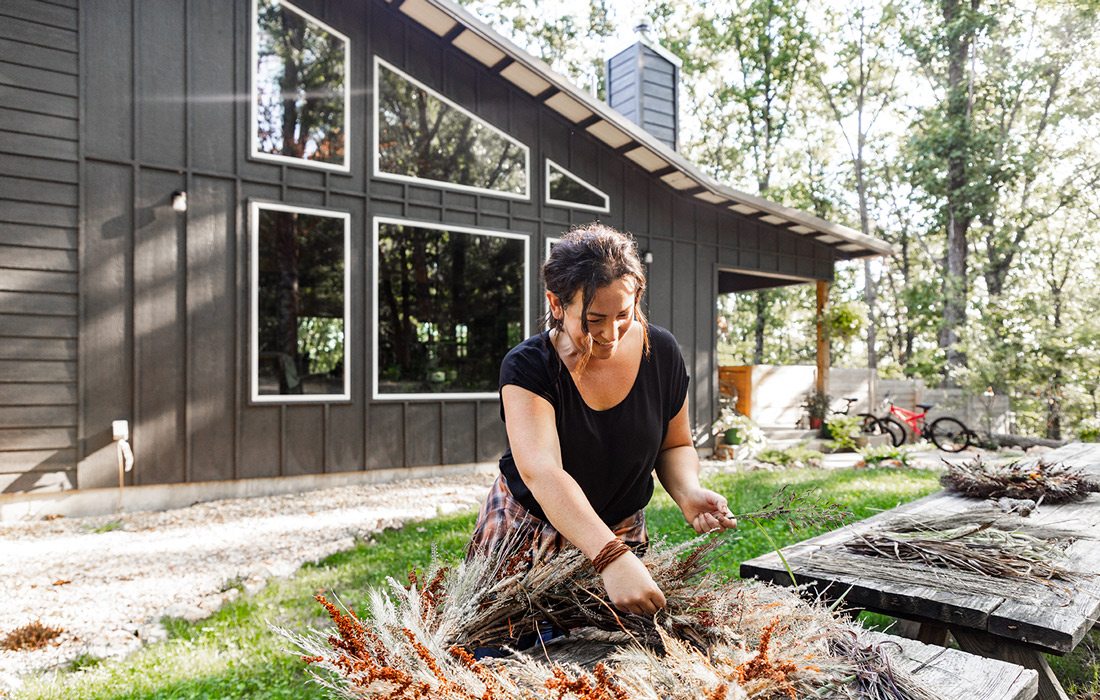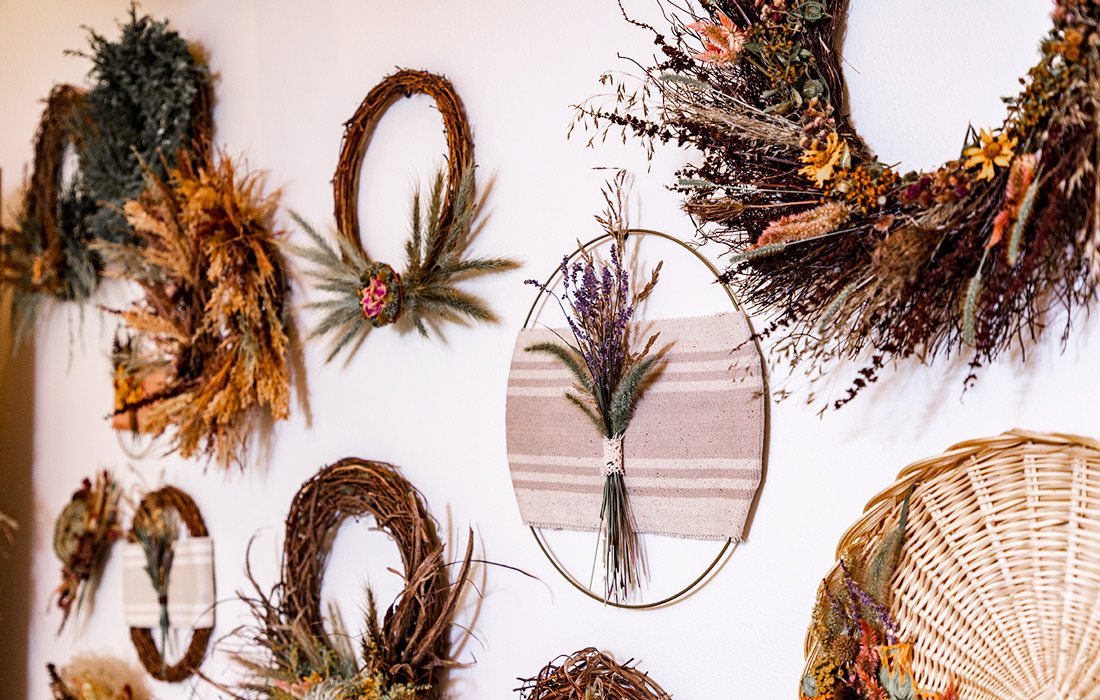DIY
Transition Your Home from Summer to Fall with Wild Elements
Wild Elements’ creations can help transition your home from summer sunshine to the moody days of fall.
By Lucie Amberg
Sep 2024

Even on a small scale... bringing a piece of the outside inside can have an incredible effect,” says Priscilla Salas, owner of Wild Elements Farm. “Our wellbeing on every level is affected positively by nature.”
Wild Elements’ fall wreaths are a dreamy way to bring Mother Nature’s bounty inside. Around this time last year, Salas started sharing the wreaths on the Wild Elements Facebook page, but she didn’t realize she was introducing a new product line. She was just looking for a way to stay creative when chilly weather put the farm’s cut-flower business on pause. People responded to Salas’s moody creations, which feature evocative components like dried oranges, moss and mushrooms. She started retailing them at pop-up markets, such as Schofield + Gray, and shops like The Plant Room and The Local Bevy. She also takes custom orders, though in some sense, every wreath is an individual creation. Given the beauty and diversity of southwest Missouri foliage, Salas never wants for inspiration. Many of the wreath components come from the woods and roadsides near her home, and foraging has become a family affair. Her four children, who range in age from 6 to 14, often tag along, and when Salas needs quick insight about a plant’s safety or usability, she phones her dad. “He’s been writing a book about plants for years,” she says, and he always encouraged her interest in the natural world.
Curly dock, one of her favorite wreath components, is prevalent in Ozarks woods. Its leaves are vibrant green in early summer, but by fall, they’ve transformed to a rusty color that’s perfectly suited to the season. Because curly dock is a dry plant, she can snip and use it right away, which makes it a powerhouse ingredient. When plants need more help drying, she might air dry them. “I have plants strung up in front of windows and in jars everywhere,” she says. She also leverages her food dehydrator to remove as much moisture as she can.
When Salas is out and about, she can’t turn off her artistic eye. Once, when she was visiting the xeriscape garden at Nixa’s Rotary Park, she saw many plants that would work for wreaths, but she didn’t want to snip them without permission. So she contacted the Christian County Master Gardeners, the organization that maintains the site. In exchange for some volunteer hours, the Master Gardeners gave Salas permission to forage to her heart’s delight.
Salas’s enthusiasm is a great asset for Wild Elements wreaths, and it’s good for her, too. She says that taking time to examine a plant and envision how it might work in a wreath is a special way to experience nature. “To really slow down and connect, for me, it’s therapy,” she says.

Tips to Make Them Last
1. Salas suggests spraying the wreath with a dried plant preservative (available at craft shops)—or even aerosol hairspray—a couple of times each season.
2. When it’s time to put your wreath away, store it in a plastic wreath container or in a box, wrapped in tissue. Keep it out of direct sunlight.
3. Wild Elements wreaths are well suited to indoor settings or covered porches. If they spend too much time outdoors, “they’ll break down as they would in nature,” she says.
[Updated September 2024, originally published September 2022.]












